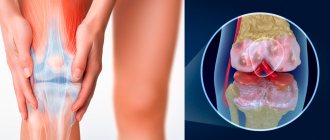Patients with persecution mania
Patients suffering from pathology constantly feel a false belief in the continuous surveillance conducted by certain forces. They are confident that such a threat is real. Controlling what is happening requires continuous tension. Obsessive thoughts do not allow patients to rest. Lack of rest and rest wears out the body in a short time. Patients are configured to protect themselves and in this state can be dangerous both to themselves and to others.
In the event of a collision between a non-medic and patients suffering from persecutory delusions, it is recommended not to argue about the presence of personnel who conduct constant surveillance. The best option would be to contact a psychiatrist for advice.
Persecution mania disease
As a disease, persecution mania has not yet been fully studied. Observations made it possible to consider an increased risk of onset in patients in whose family the diagnosis was observed.
As a result of a stressful situation or for other reasons, patients develop persecution mania. Patients feel the constant presence of surveillance. As the patient develops, the body wears out due to the lack of long hours of rest. It is recognized as a manifestation of manic-depressive psychosis, schizophrenia and some other psychiatric diagnoses.
An increased risk of onset of the disease is observed in patients suffering from alcoholism or drug addiction. Often the disease begins against the background of neurological diagnoses. Primarily Alzheimer's disease and Parkinson's disease.
Symptoms of delusions of persecution
Symptoms of persecutory delusions vary. The patient feels that others want to harm him. These can be not only real people, but also fictional creatures (demons, werewolves, etc.). The patient is even able to name the reason why he is being monitored. If unpleasant situations occur in the patient’s life, he considers them the result of the actions of the persecutors. In addition to the above symptoms, persecution mania can manifest itself as follows:
- social maladjustment (the patient cannot function normally in society because he feels threatened everywhere);
- panic attacks or increased anxiety;
- perception of the attitude of others as aggressive;
- changes in character, increased isolation and lack of trust in other people.
Diagnosis of persecution mania
The diagnosis is carried out by a psychiatrist. It includes laboratory, instrumental and psychological procedures, and also includes:
- study of disease symptoms;
- communication with the patient’s relatives to obtain more information about the patient’s condition;
- analysis of the patient’s medical history (increased attention should be paid to bad habits, genetic predisposition and brain diseases).
Pursuit mania in women
The onset of pathology in women is often associated with hormonal changes occurring in the body. This could equally be any resolution of pregnancy (abortion, miscarriage, childbirth), a hormonal surge during adolescence or menopause. There is also a significant role in the onset of pathology when stressful situations arise.
Women who suffer from suspicions of persistent stalking are characterized by increased levels of fear for their health. Often the feeling of being watched extends to family members.
The constant feeling of being watched provokes hysteria. Nervous conditions may cause body temperature to rise, heart rate to increase, and painful symptoms to occur.
Paranoia (persecution mania)
Persuasive delusions, also called paranoia, can affect men and women. The list of reasons for the onset of pathology states:
- congenital predisposition;
- drug addiction;
- alcoholism;
- injuries leading to brain damage;
- neurological diagnoses, Parkinson's disease, Alzheimer's disease;
- other reasons.
Often doctors are unable to associate the onset of a disease with a specific starting point. Regardless of the patient’s gender, the patient may expect the presence of constant surveillance from representatives of large global communities or simply neighbors. Although there is a tendency for the majority of patients to classify their “controllers” as representatives of the authorities, alien civilizations and other large structures and departments.
The diagnosis is often made in patients in the older age group. Especially those who have suffered a stroke suffer from neurological diseases. In this situation, delusional thoughts more often spread to family members and acquaintances, from the point of view of the paranoid, claiming his property and wishing him death.
Pursuit mania
Stroke
11703 20 August
IMPORTANT!
The information in this section cannot be used for self-diagnosis and self-treatment.
In case of pain or other exacerbation of the disease, diagnostic tests should be prescribed only by the attending physician. To make a diagnosis and properly prescribe treatment, you should contact your doctor. Persecution mania: causes of occurrence, what diseases it occurs with, diagnosis and treatment methods.
Definition
Persecution mania (delusion of persecution) is a mental disorder that is expressed in a person’s obsession with a threat to his own safety, about the presence of surveillance of him. No amount of protection (isolation, moving) relieves such patients from delusional ideas.
Varieties of persecution mania
Mental disorders manifested by delusions can vary significantly depending on the disease that caused them. Often, based on the type and structure of delirium, one can make a conclusion about the cause of its occurrence. Delirium can be systematized, logical
, well connected with the environment.
In these cases, it can only be identified by the obsession of the state. Such delirium accompanies the formation of a new “I” in schizophrenia. Sometimes delirium is fragmentary, unsystematic in nature
and can be supplemented
by illusory perceptions, pseudo-hallucinations
(“pseudo” - because the patient understands that they are unreal) of certain “enemies”, “spies” or “killers”, which is typical for acute alcoholic psychosis.
Delirium may be accompanied by sensory sensations
.
So, for example, with an obsession with the penetration of harmful creatures into the body, the patient feels their physical passage through the skin and mouth. When there is a combination of diseases that affect the patient’s psyche, there is a superposition of delusional ideas.
This happens, for example, in alcoholic psychosis that occurs in patients with schizophrenia.
Diseases that cause delusions or persecution mania
Organic vascular damage
, which is accompanied by sclerotic changes, encephalopathy, stroke, quite often causes a change in the patient’s personality. The clinical picture of such changes may be accompanied by the emergence of various psychoses and delusional ideas. In addition, mental disorders are aggravated by age-related changes. Since the disorder is based on compensation and decompensation of brain nutrition, the clinical picture of the disease is characterized by periodicity.
In the case of the usual stereotype of life under standard loads, the patient copes with the situation, but with any deviations from the norm or the presentation of new demands, psychosis may occur.
Along with depression and anxiety, they often coexist with delusional states: paranoia, auditory hallucinations. Psychoses intensify in the evening and at night and are accompanied by neurological disorders. Syndromes that develop against the background of vascular disorders may include manic, anxious, and depressive components. The addition of delusional ideas of persecution is possible, especially if the patients’ ability to analyze and abstract is sharply reduced. Therefore, the delirium of such persons is characterized by a rough structure and lack of logic. Most often they develop delusions of jealousy, poisoning and persecution mania.
For schizophrenia
Delusions of persecution are considered the most common. As a rule, this condition is observed in paranoid schizophrenia. When analyzing delirium, its logic and good correlation with external circumstances are noted. Often delirium is supplemented by sensory sensations, especially if there is an obsession about poisoning. Patients feel a suspicious taste, burning sensation, smell, which, in their opinion, indicates poisoning. Thus, the picture of delirium is characterized by complexity, the inclusion of various emotional components in the plot - “hints”, “grievances”, “ridicule”. This developed “formation” of persecutory mania distinguishes delusions in schizophrenia from intoxication damage in alcoholism. Intelligence in patients with schizophrenia does not suffer, which is also a characteristic feature of the disease.
Often the development of persecution mania is preceded by the appearance of unmotivated fear of people and social phobia.
Such fear makes you avoid others and be afraid of people walking behind you.
Persecutory mania may develop in bipolar disorder
– a mental illness, the symptom of which is alternation of depression and manic episodes. Moreover, in women the disease more often begins with periods of depression, in men – with the development of mania. The period of depression is accompanied by tearfulness, despondency, and complaints of lack of strength. Such patients are characterized by impaired concentration, memory, and decreased cognitive abilities. After some time, depression is replaced by manic syndrome. Dejection turns into excessive cheerfulness and talkativeness. A person makes many plans that remain unrealized. Self-control of one’s condition changes significantly during these two phases of the disease. During depression, patients, as a rule, are aware that there is no reason for this condition and seek medical help, while during a manic period, self-criticism decreases, and any advice to visit a doctor is perceived extremely negatively. Psychotic symptoms are a characteristic feature of bipolar disorder. During the depressive phase, delusions of guilt or hypochondriacal delusions (confidence in the violation of the state of one’s body) may form. During the manic phase, inflated self-esteem leads to the formation of delusions of grandeur, and lack of criticality and suspicion develop into persecution delusions.
Epilepsy
, which develops in children, can also be accompanied by persecution mania. The clinical picture of the disease is characterized not only by the occurrence of repeated spontaneous attacks, but also by various neurological and mental changes in the personality. Patients with epilepsy are characterized, on the one hand, by a tendency to viscosity of thinking, and on the other, by impulsiveness.
Epileptics often show egocentrism, fixation on their needs, excessive attention to their health, cruelty and aggressiveness, and are in a depressed mood.
Mental disorders also include sensory, psychosensory and speech disorders, fears, sleep disturbances and disorientation. Among the delusional syndromes in children with epilepsy, paranoid delusions with plots of persecution and excessive attention to their health may be noted. Sometimes these may be delusions, including hallucinations or ideas of fantastic events.
Delusions of persecution may be a manifestation of
Bourneville-Pringle
disease (tuberous sclerosis), a genetically determined disease in which proliferation of the skin and blood vessels, damage to the nervous system and the growth of benign tumors in various organs are noted. Clinical signs of the disease appear either from birth or in the first year of life.
A characteristic skin symptom is hypomelanotic spots (discolored areas of the skin or a spot in the form of a tree leaf), which are noted in all patients in the second year of life.
Neurological symptoms include convulsive paroxysms. They cannot be controlled with anticonvulsant therapy, and, as a rule, they become the main cause of disability. In the future, mental retardation and behavior changes are revealed.
The earlier epileptic seizures occur, the more severe the mental retardation. If the development of the nervous system is ahead of the pathological process, then various psychoses (fear, persecution mania, annoying behavior) are more pronounced in patients.
Acute paranoid, which manifests itself as delusions of persecution and hallucinations, occurs during alcohol and drug intoxication
. In the subacute period of the disease, patients have no hallucinations, and the structure of mania becomes more orderly and logical. As a rule, against the background of isolation and suspiciousness, patients with alcoholism experience inexplicable attacks of fear and aggression.
Which doctors should I contact if I have persecution mania?
It is very difficult to encourage a patient who has visions of being watched or stalked to see a doctor. However, this must be done using a variety of reasons. If you cannot overcome the fear of visiting a psychotherapist or, you need to contact or, who can make a preliminary diagnosis. In some cases, consultation with a dermatologist and ophthalmologist may be required.
Diagnosis and examinations for persecution mania
Only a thorough examination of individuals who exhibit persecutory obsession can help make a correct diagnosis. Vascular pathologies that may contribute to the development of persecutory delusions are indicated by the results of CT and MRI of the brain.
Signs and symptoms of persecutory mania in women
When pathology appears, women become very nervous and wary. They try to constantly monitor what is happening nearby. They may refuse to leave the premises and strive for maximum privacy. Problems arise in communicating with friends and relatives. Patients often leave work and stop social contacts. Suspicions may extend to family members and acquaintances.
Women often begin to stop caring for themselves. Their privacy is being violated. The patient begins to assume a desire to harm her on the part of almost everyone she meets. She may be afraid of cases of violence against her; in defending herself, she can be dangerous to others. Complaints to the police or government agencies are often possible. The complaints are not confirmed.
Patients become difficult in family life. Suspicions may extend to the closest family members, husband, children, parents.
Signs and symptoms of persecutory mania in men
In most cases, the syndrome manifests itself in men under the assumption of continuous surveillance. Already in the early stages, the patient tries to isolate himself from the world as much as possible, assuming that everyone he meets could be an enemy.
Men have a hard time with the constant feeling of being watched. Their body wears out quickly. In response to perceived aggression, they may be inclined to attack people, considering them a potential enemy. Constant tension often turns into depression, leading to thoughts of suicide. In a state of seizures, the patient is often dangerous to loved ones and others. In an effort to “save” them from imminent death, an attempt to kill those “being saved” is possible.
Symptoms of paranoia
Delirium and mania are considered chronic illnesses. If they appear once, acute fear becomes permanent. Such thoughts become firmly rooted in a person’s consciousness, and his character changes. He is no longer influenced by the arguments and persuasion of his relatives. Relatives can do even worse. Symptoms and signs will be evidence of paranoia, the need for a more thorough check of the person by a doctor.
It is possible to independently determine the development of the disease paranoia, since the consequences of the problems are very clearly manifested. Relatives and friends will definitely notice delusional ideas and thoughts that conspiracies are being built against the patient, intrigues are being arranged. At the same time, paranoids prove their theories quite soberly and reasonably.
Paranoia manifests itself in women and men in identical ways, but the clinical picture may differ slightly. Symptoms directly depend on age and degree of development of the disease. The most common signs of the disease are:
- excessive mental activity. People constantly evaluate situations, even the simplest ones, from different angles. This behavior allows you to find a problem that is set against the individual;
- significant physical activity;
- megalomania;
- lack of desire to make contact with other people;
- negative attitude towards loved ones, relatives, friends;
- touchiness, jealousy;
- aggression directed at oneself and society;
- auditory, tactile and visual hallucinations. At the same time, there is no way to convince them of their unreality; a person believes that only he is right in everything;
- in the manifestation of changes in facial expressions, gait, and gestures.
Treatment of paranoia in women is based on overcoming distrust of the environment, open hostility, increased sensitivity or obsessive thoughts of an erotic nature. Representatives of the fair sex most often believe that conspiracies are actively being hatched against them with the aim of causing insult, depriving them of property and income, and harming their family and loved ones.
Curing paranoia in men may be associated with obsession with one single idea, for example, against the background of jealousy, relationships, superpowers, or one’s own genius. It is imperative to seek help from a specialist if there is even the slightest suspicion of a mental personality disorder. In the event of a violation, it is very important to provide timely medical assistance to stop the destructive consequences of the development of pathological changes.








